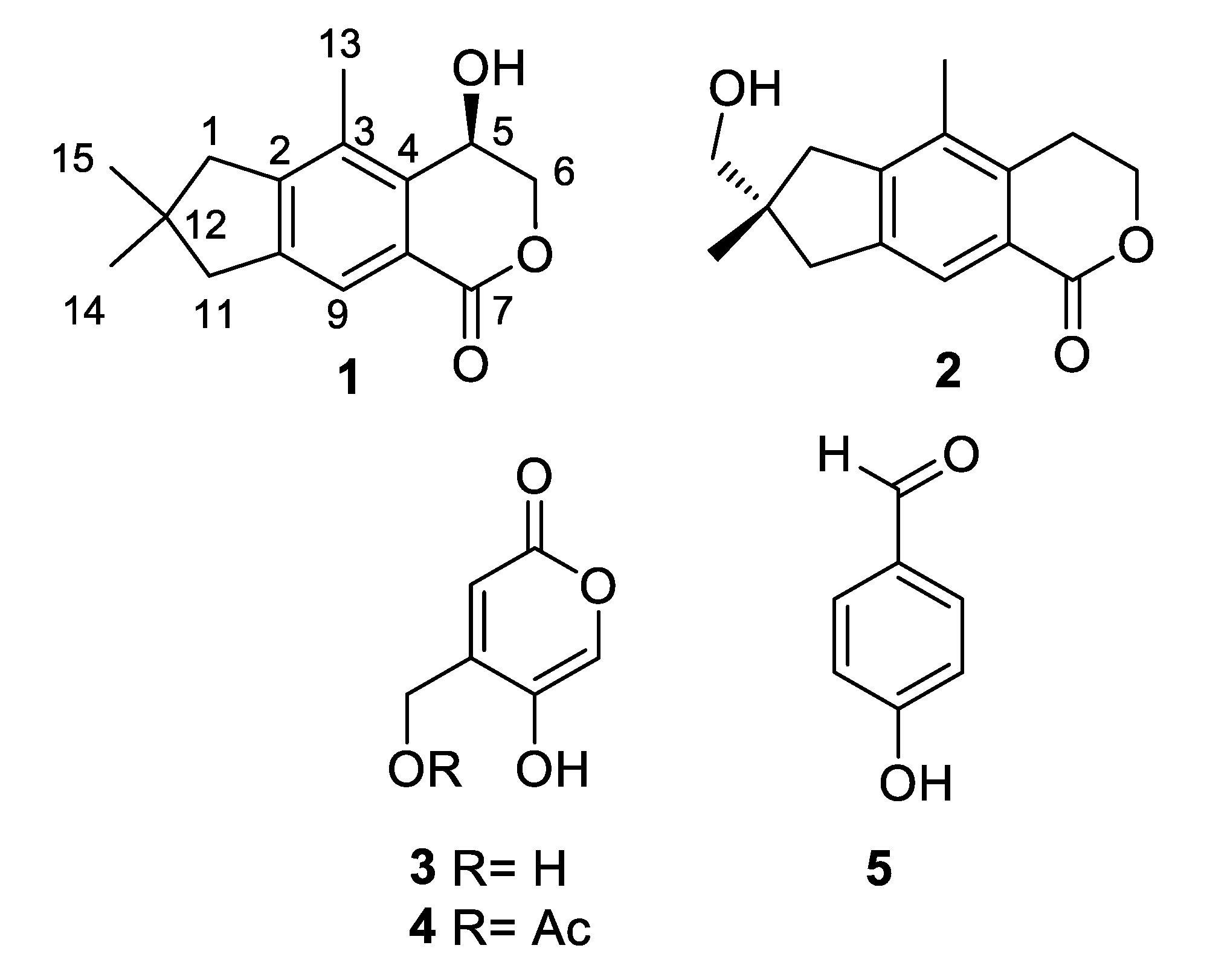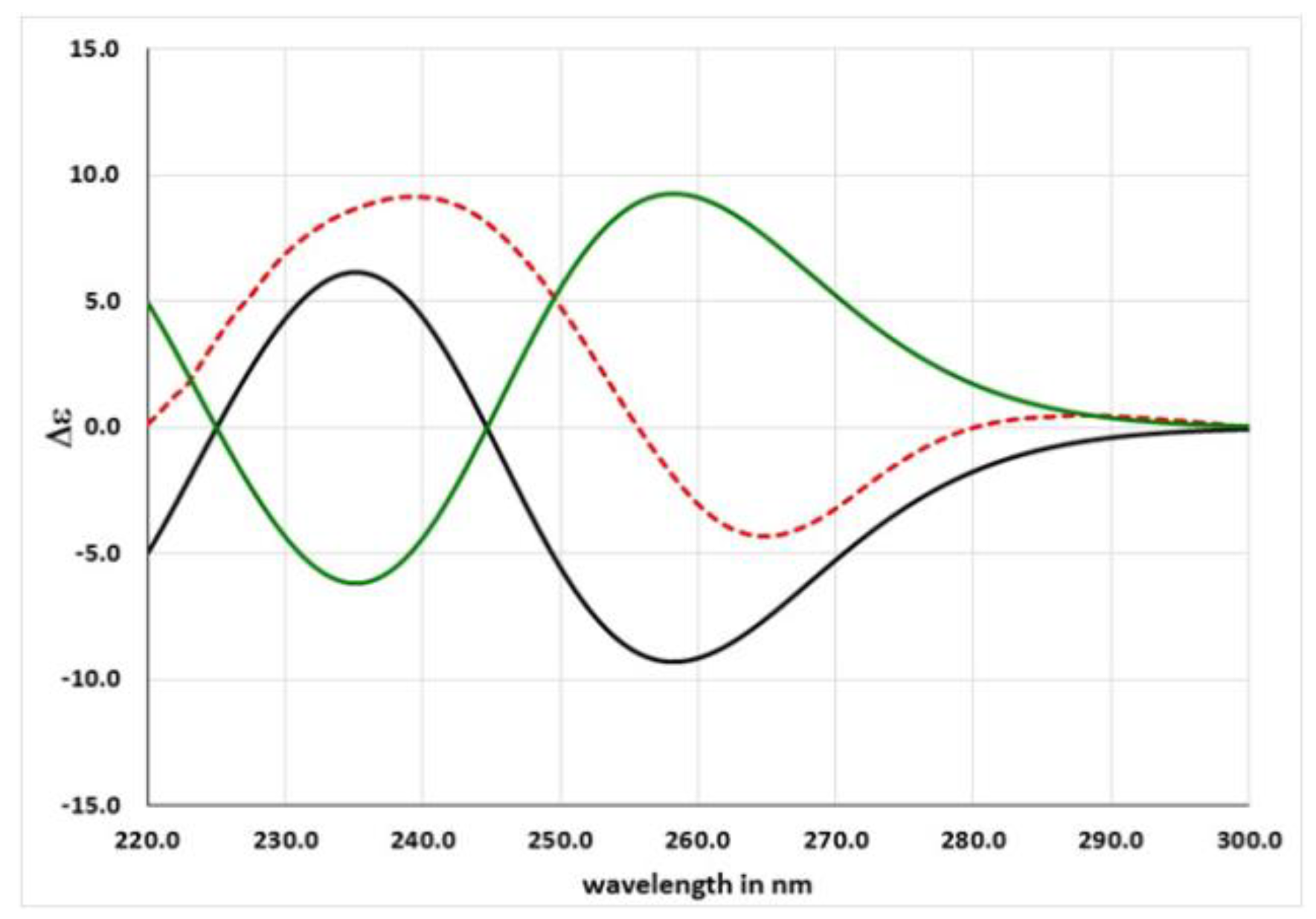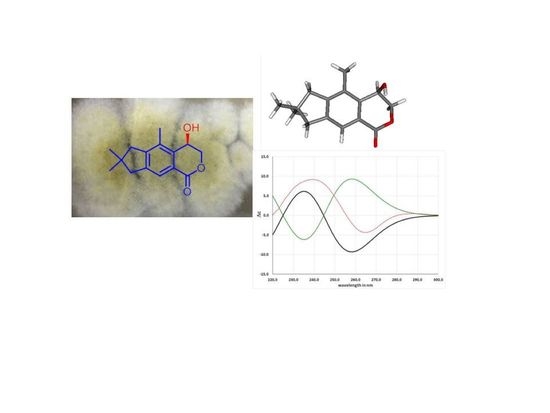Antiproliferative Illudalane Sesquiterpenes from the Marine Sediment Ascomycete Aspergillus oryzae
Abstract
:1. Introduction
2. Results and Discussion
2.1. Extraction and Structural Identification
2.2. Pharmacological and Toxicological Evaluation of the Isolated Compounds
3. Materials and Methods
3.1. Fungal Material
3.2. Fermentation, Extraction, and Isolation
3.3. Computational Calculations
3.4. In Vitro Antiproliferative Activity
3.5. Zebrafish Toxicity Screening
4. Conclusions
Supplementary Materials
Author Contributions
Funding
Institutional Review Board Statement
Informed Consent Statement
Data Availability Statement
Conflicts of Interest
References
- Montaser, R.; Luesch, H. Marine natural products: A new wave of drugs? Future Med. Chem. 2011, 3, 1475–1489. [Google Scholar] [CrossRef] [Green Version]
- Carroll, A.R.; Copp, B.R.; Davis, R.A.; Keyzers, R.A.; Prinsep, M.R. Marine natural products. Nat. Prod. Rep. 2019, 36, 122–173. [Google Scholar] [CrossRef] [Green Version]
- Available online: https://www.marinepharmacology.org (accessed on 25 May 2021).
- White, K.M.; Rosales, R.; Yildiz, S.; Kehrer, T.; Miorin, L.; Moreno, E.; Jangra, S.; Uccellini, M.B.; Rathnasinghe, R.; Coughlan, L.; et al. Plitidepsin has potent preclinical efficacy against SARS-CoV-2 by targeting the host protein eEF1A. Science 2021, 371, 926–931. [Google Scholar] [CrossRef] [PubMed]
- Taglialatela-Scafati, O. New hopes for drugs against COVID-19 come from the sea. Mar. Drugs 2021, 19, 104. [Google Scholar] [CrossRef] [PubMed]
- Bugni, T.S.; Ireland, C.M. Marine-derived fungi: A chemically and biologically diverse group of microorganisms. Nat. Prod. Rep. 2004, 21, 143–163. [Google Scholar] [CrossRef] [PubMed]
- Gomes, N.G.M.; Lefranc, F.; Kijjoa, A.; Kiss, R. Can some marine-derived fungal metabolites become actual anticancer agents? Mar. Drugs 2015, 13, 3950–3991. [Google Scholar] [CrossRef]
- Yoon, J.; Kikuma, T.; Maruyama, J.; Kitamoto, K. Enhanced production of bovine chymosin by autophagy deficiency in the filamentous fungus Aspergillus oryzae. PLoS ONE 2013, 8, e62512. [Google Scholar] [CrossRef] [PubMed] [Green Version]
- Singh, B.K.; Park, S.H.; Lee, H.B.; Goo, Y.A.; Kim, H.S.; Cho, S.H.; Lee, J.H.; Ahn, G.W.; Kim, J.P.; Kang, S.M.; et al. Kojic acid peptide: A new compound with anti-tyrosinase potential. Ann. Dermatol. 2016, 28, 555–561. [Google Scholar] [CrossRef] [Green Version]
- Orfali, R.; Perveen, S.; Al-Taweel, A.; Ahmed, A.F.; Majrashi, N.; Alluhay, K.; Khan, A.; Luciano, P.; Taglialatela-Scafati, O. Penipyranicins A-C, antibacterial methylpyran polyketides from a hydrothermal spring sediment Penicillium sp. J. Nat. Prod. 2020, 83, 3591–3597. [Google Scholar] [CrossRef]
- Orfali, R.; Ebrahim, W.; Perveen, S.; Mejrashi, M.; Alluhayb, K.; Ebada, S.S. Cytotoxic Secondary Metabolites from Mangrove-Rhizosphere-Associated Fungus Emericella sp. Strain SWR1718. J. King Saud Univ. Sci. 2020, 32, 2656–2661. [Google Scholar] [CrossRef]
- Orfali, R.; Perveen, S. Secondary metabolites from the Aspergillus sp. in the rhizosphere soil of Phoenix dactylifera (Palm tree). BMC Chem. 2019, 13, 103. [Google Scholar] [CrossRef]
- Orfali, R.; Perveen, S. New bioactive metabolites from the thermophilic fungus Penicillium sp. isolated from Ghamiqa hot spring in Saudi Arabia. J. Chem. 2019, 7162948. [Google Scholar] [CrossRef] [Green Version]
- Bhusnure, O.; Mane, J.; Gholve, S.; Thonte, S.; Giram, P.S.; Sangshetti, J. Drug target screening and its validation by zebrafish as a novel tool. Pharm. Anal. Acta 2015, 6, 1–9. [Google Scholar] [CrossRef]
- MacRae, C.A.; Peterson, R.T. Zebrafish as tools for drug discovery. Nat. Rev. Drug Discov. 2015, 14, 721–731. [Google Scholar] [CrossRef] [PubMed]
- Yoganantharjah, P.; Gibert, Y. The use of the zebrafish model to aid in drug discovery and target validation. Curr. Top. Med. Chem. 2017, 17, 2041–2055. [Google Scholar] [CrossRef] [PubMed]
- Suzuki, S.; Murayama, T.; Shiono, Y. Echinolactones C and D: Two illudalane sesquiterpenoids isolated from the cultured mycelia of the fungus Echinodontium japonicum. Z. Naturforsch. 2006, 61, 1295–1298. [Google Scholar] [CrossRef]
- Lin, A.; Lu, X.; Fang, Y.; Zhu, T.; Gu, Q.; Zhu, W. Two new 5-hydroxy-2-pyrone derivatives isolated from a marine-derived fungus Aspergillus flavus. J. Antibiot. 2008, 61, 245–249. [Google Scholar] [CrossRef]
- Kokubun, T.; Scott-Brown, A.; Kite, G.C.; Simmonds, M.S.J. Protoilludane, illudane, illudalane, and norilludane sesquiterpenoids from Granulobasidium vellereum. J. Nat. Prod. 2016, 79, 1698–1701. [Google Scholar] [CrossRef] [PubMed]
- Happi, G.M.; Kouam, S.F.; Talontsi, F.M.; Nkenfou, C.N.; Longo, F.; Zuhlke, S.; Douanla-Meli, C.; Spiteller, M. A new dimeric naphtho-γ-pyrone from an endophytic fungus Aspergillus niger AKRN associated with the roots of Entandrophragma congoënse collected in Cameroon. Z. Naturforsch. 2015, 70, 625–630. [Google Scholar] [CrossRef]
- Ebrahim, W.; El-Neketi, M.; Lewald, L.I.; Orfali, R.; Lin, W.; Rehberg, N.; Kalscheuer, R.; Daletos, G.; Proksch, P. Metabolites from the fungal endophyte Aspergillus austroafricanus in axenic culture and in fungal–bacterial mixed cultures. J. Nat. Prod. 2016, 79, 914–922. [Google Scholar] [CrossRef] [PubMed]
- Ohtani, I.; Kusumi, T.; Kashman, Y.; Kakisawa, H. High-field FT NMR application of Mosher’s method. The absolute configurations of marine terpenoids. J. Am. Chem. Soc. 1991, 113, 4092–4096. [Google Scholar] [CrossRef]
- Morisaki, N.; Furukawa, J.; Kobayashi, H.; Iwasaki, S.; Nozoe, S.; Okuda, S. Cyclobutyl cation rearrangements of 6-protoilluden-8α-ol, 7-protoilluden-6-ol and related compounds. Chem. Pharm. Bull. 1987, 35, 2678–2685. [Google Scholar] [CrossRef] [Green Version]
- McMorris, T.C.; Nair, M.S.R.; Singh, P.; Anchel, M. The structure of illudol. Phytochemistry 1971, 10, 3341–3342. [Google Scholar] [CrossRef]
- Nord, C.L.; Menkis, A.; Broberg, A. Cytotoxic illudalane sesquiterpenes from the wood-decay fungus Granulobasidium vellereum (Ellis & Cragin) Julich. Molecules 2014, 19, 14195–14203. [Google Scholar]
- Lu, J.; Peng, C.Y.; Cheng, S.; Liu, J.Q.; Ma, Q.G.; Shu, J.C. Four new pterosins from Pteris cretica and their cytotoxic activities. Molecules 2019, 24, 2767. [Google Scholar] [CrossRef] [PubMed] [Green Version]
- Kjer, J.; Debbab, A.; Aly, A.; Proksch, P. Methods for isolation of marine-derived endophytic fungi and their bioactive secondary products. Nat. Protoc. 2010, 5, 479–490. [Google Scholar] [CrossRef] [PubMed]
- Finney, D.J. Probit Analysis: A Statistical Treatment of the Sigmoid Response Curve; Cambridge University Press: Cambridge, UK, 1952. [Google Scholar]






| Positions | δH (Mult., J in Hz) | δC, Type |
|---|---|---|
| 1a | 2.83 (overlapped) | 46.5, CH2 |
| 1b | 2.81 (d, 17.5) | |
| 2 | - | 150.1, C |
| 3 | - | 132.2, C |
| 4 | - | 136.2, C |
| 5 | 4.95 (dd, 1.0, 2.1) | 60.8, CH |
| 6 | 4.63 (dd, 1.0, 12.0) | 72.7, CH2 |
| 4.52 (dd, 2.1, 12.0) | ||
| 7 | - | 166.5, C |
| 8 | - | 122.7, C |
| 9 | 7.75 (s) | 123.1, CH |
| 10 | - | 144.3, C |
| 11 | 2.82 (overlapped) | 47.1, CH2 |
| 12 | - | 39.3, C |
| 13 | 2.37 (s) | 13.1, CH3 |
| 14 | 1.19 (s) | 27.5, CH3 |
| 15 | 1.19 (s) | 27.5, CH3 |
| Compound | IC50 (µM) for the Different Carcinoma Cell Lines | ||
|---|---|---|---|
| A549 (Lung) | HepG2 (Liver) | MCF-7 (Breast) | |
| 1 | 72.7 ± 1.1 | 86.6 ± 3.2 | 106.5 ± 4.2 |
| 2 | 55.7 ± 2.5 | 148.4 ± 5.6 | 128.0 ± 2.8 |
| 3 | 208.5 ± 6.8 | 220.4 ± 3.6 | 225.4 ± 5.1 |
| 4 | 89.4 ± 2.3 | 126.8 ± 6.4 | 170.7 ± 4.5 |
| 5 | 97.5 ± 2.6 | 242.6 ± 6.4 | 158.2 ± 5.5 |
| Doxorubicin | 2.1 ± 0.08 | 2.2 ± 0.15 | 1.9 ± 0.05 |
Publisher’s Note: MDPI stays neutral with regard to jurisdictional claims in published maps and institutional affiliations. |
© 2021 by the authors. Licensee MDPI, Basel, Switzerland. This article is an open access article distributed under the terms and conditions of the Creative Commons Attribution (CC BY) license (https://creativecommons.org/licenses/by/4.0/).
Share and Cite
Orfali, R.; Perveen, S.; Khan, M.F.; Ahmed, A.F.; Wadaan, M.A.; Al-Taweel, A.M.; Alqahtani, A.S.; Nasr, F.A.; Tabassum, S.; Luciano, P.; et al. Antiproliferative Illudalane Sesquiterpenes from the Marine Sediment Ascomycete Aspergillus oryzae. Mar. Drugs 2021, 19, 333. https://doi.org/10.3390/md19060333
Orfali R, Perveen S, Khan MF, Ahmed AF, Wadaan MA, Al-Taweel AM, Alqahtani AS, Nasr FA, Tabassum S, Luciano P, et al. Antiproliferative Illudalane Sesquiterpenes from the Marine Sediment Ascomycete Aspergillus oryzae. Marine Drugs. 2021; 19(6):333. https://doi.org/10.3390/md19060333
Chicago/Turabian StyleOrfali, Raha, Shagufta Perveen, Muhammad Farooq Khan, Atallah F. Ahmed, Mohammad A. Wadaan, Areej Mohammad Al-Taweel, Ali S. Alqahtani, Fahd A. Nasr, Sobia Tabassum, Paolo Luciano, and et al. 2021. "Antiproliferative Illudalane Sesquiterpenes from the Marine Sediment Ascomycete Aspergillus oryzae" Marine Drugs 19, no. 6: 333. https://doi.org/10.3390/md19060333
APA StyleOrfali, R., Perveen, S., Khan, M. F., Ahmed, A. F., Wadaan, M. A., Al-Taweel, A. M., Alqahtani, A. S., Nasr, F. A., Tabassum, S., Luciano, P., Chianese, G., Sheu, J.-H., & Taglialatela-Scafati, O. (2021). Antiproliferative Illudalane Sesquiterpenes from the Marine Sediment Ascomycete Aspergillus oryzae. Marine Drugs, 19(6), 333. https://doi.org/10.3390/md19060333









